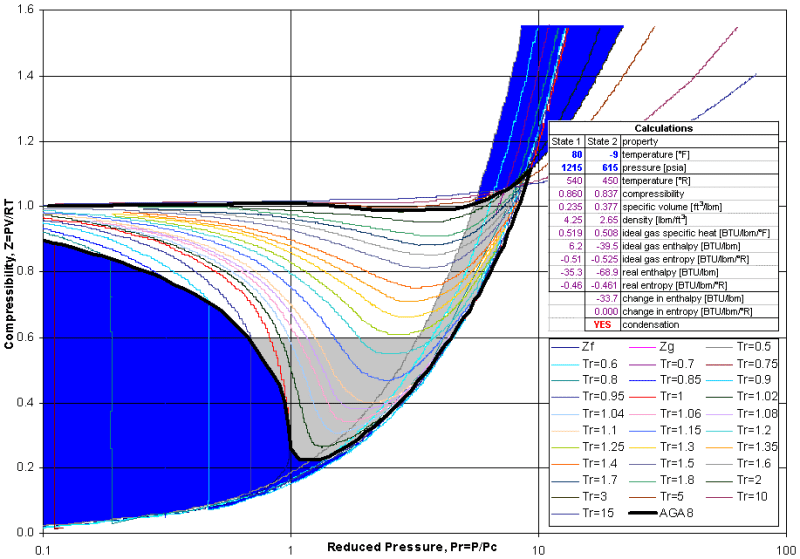Pulsater555
Petroleum
- Sep 30, 2019
- 11
Hello All,
I am currently working on a tool and I am looking for the individual specific Molar Heat Capacity MCp (Ideal-Gas State), Btu/(lb mol • °R) for compounds normally found in Natural Gas including (C1-C10), Nitrogen, Hydrogen, Water, CO2, etc.
Most of the tables I have come across are only at specific pressures however the specific molar heat capacities change dependent on both temperature and pressure.
Does anyone know of good resources to get this data from that has this information with respect to varying changes in pressure and temperature?
Never Stop Learning
I am currently working on a tool and I am looking for the individual specific Molar Heat Capacity MCp (Ideal-Gas State), Btu/(lb mol • °R) for compounds normally found in Natural Gas including (C1-C10), Nitrogen, Hydrogen, Water, CO2, etc.
Most of the tables I have come across are only at specific pressures however the specific molar heat capacities change dependent on both temperature and pressure.
Does anyone know of good resources to get this data from that has this information with respect to varying changes in pressure and temperature?
Never Stop Learning

